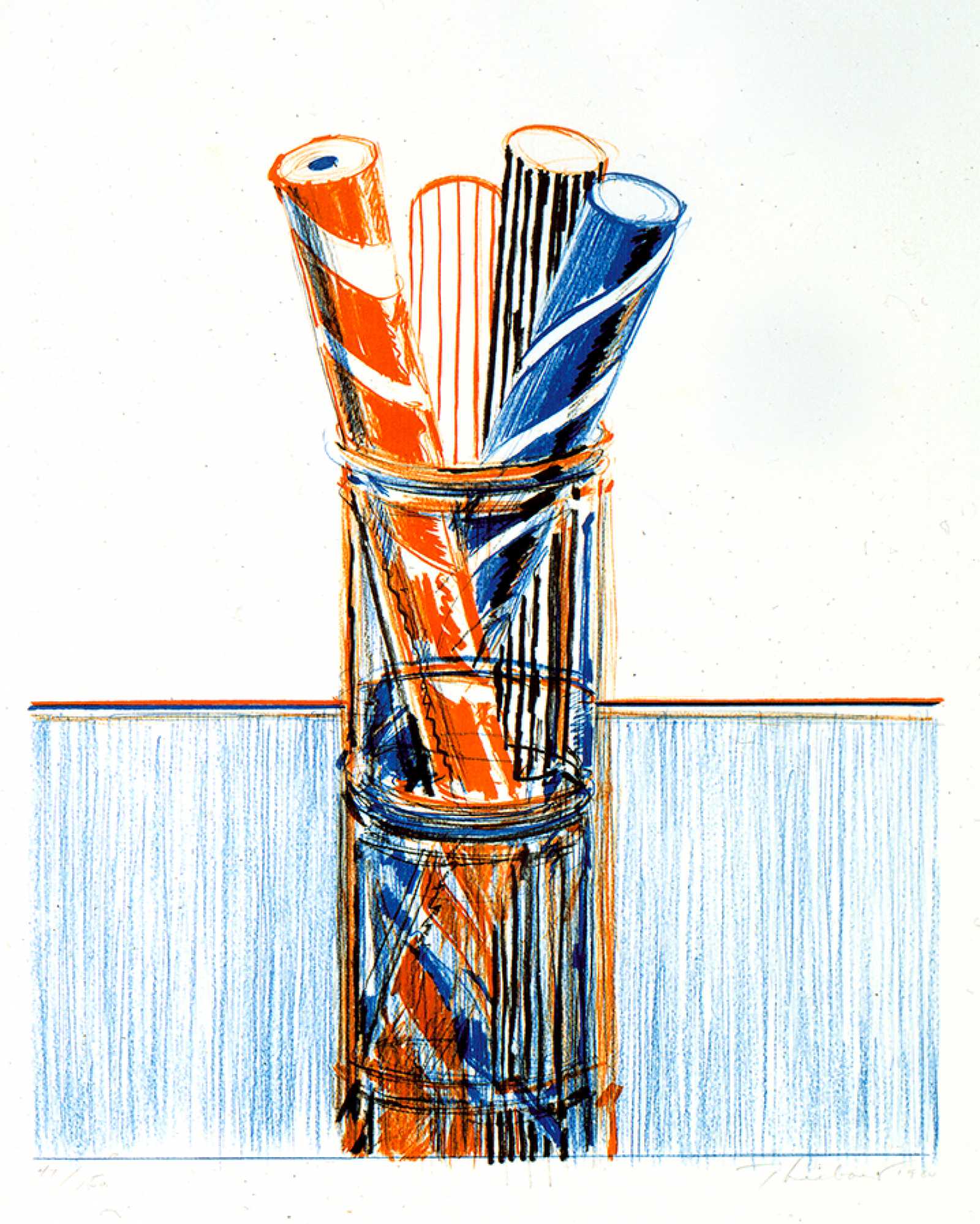Get Inspired by Wayne Thiebaud
Wayne Thiebaud (American, born 1920), Glassed Candy, 1980, lithographic, edition 47/150, 30 x 22 inches. Gift of Herk Van Tongeren, 571-1986.
Practice blind contour drawing with the work of Wayne Thiebaud to improve your observation skills and your hand-eye coordination. Blind contour drawing involves focusing on the outline and shapes of an object and drawing its contours without looking at the paper. With this technique, artists emphasize observation—or what they are actually seeing—rather than impressions—or what they think they are seeing.
Learn more about Wayne Thiebaud
Supplies:
- Drawing paper
- Pencils
- Optional: coloring supplies
Instructions
Step 1
As you practice blind contour drawing, you will explore the process of looking. The goal is to focus on observation, particularly of forms and shapes. This is more important than trying to create a precise reproduction.
For this activity, there are a few simple rules to follow:
- Keep your eyes on your subject.
- Keep your pencil on the paper.
- Continue to draw as your eyes move along the object you have selected.
- Do not look at your paper while you are drawing.
Tip: Place fabric (such as a scarf) or a large piece of paper (such as a newspaper), over your hands and paper while you draw so you do not accidentally peek at your drawing.
Step 2
Use the work of Wayne Thiebaud to practice your contour drawing. Focus on the shapes, forms, and outlines. Or, select an object or objects, such as household items around you, for your subject.
Take time to examine your selection. Do not do anything other than look, exploring as many details as possible.
Step 3
Select an area to begin your drawing. Place the tip of your pencil on your paper. Look back up at the object and slowly scan the edges and contours of the object as you begin moving your pencil along with your eye movements. Try not to look at the paper!
Tip: To practice developing hand-eye coordination, you might first try tracing the shapes with a finger as your eyes move across the subject. After your practice tracing, then repeat these movements with your pencil.
Step 4
Examine your drawing.
What do you notice about it?
Does it reflect what you saw?
In what ways is it similar?
In what ways is it different?
Step 5
There are different ways to look at the same object. Continue to practice contour drawing with the same image or object. How was the process different or the same the second time?
You might also add color to your favorite drawing.






